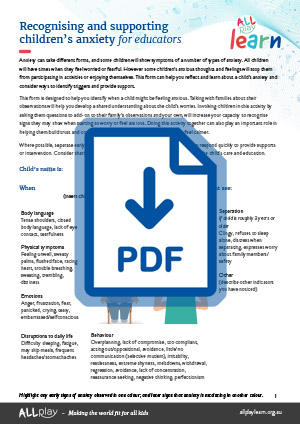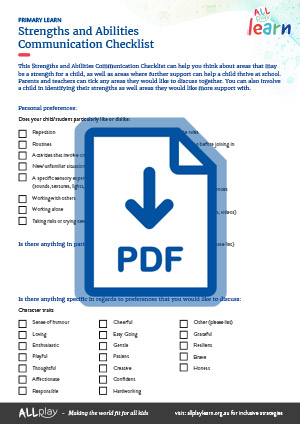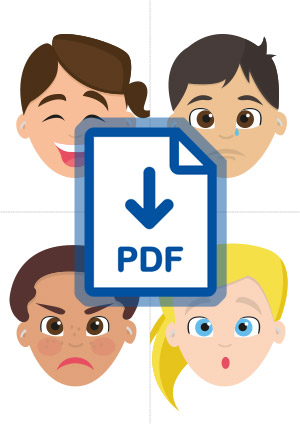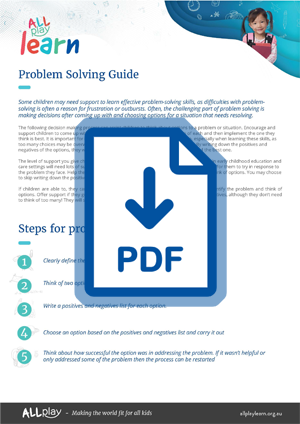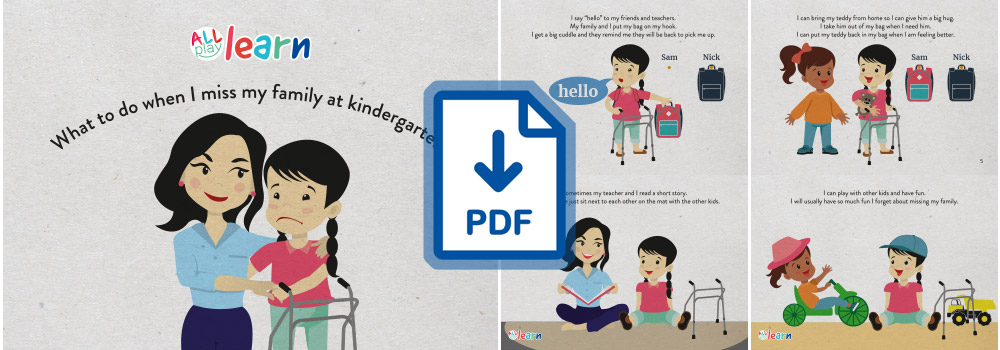

About anxiety
We all worry or feel scared at times, but some children may worry so much that they avoid participating in activities, being with others, or going to places. Children with disabilities and developmental challenges often experience higher rates of anxiety than their peers. Anxiety can take different forms, and some children can show symptoms of a number of types of anxiety. You can learn about the different forms of anxiety in young children below.
Separation anxiety. Separation anxiety in very young children is normal, however, should lessen from around the age of two. Children with separation anxiety become upset when separated from caregivers or family members. They may find separation at the beginning of the day difficult.
Selective mutism. Children with selective mutism can become anxious about speaking in social situations. Children with selective mutism may speak confidently at home, yet not talk at all at an early childhood program or in other specific places. They may also find eye contact difficult.

Strengths
What might be some strengths?
- Children with anxiety may connect with trusted adults or peers for support.
- Children with selective mutism may cooperate well with other children and obey the rules, and so have good friends and avoid being bullied.
Where might you provide support?
- Worried and scared children usually try to avoid the thing that scares them. This could mean that they avoid or don’t join in for some activities.
- They may look nervous or restless or they may keep to themselves. Some children who are really scared might cry and become very upset. If they are really worried or scared, they may refuse to attend their early childhood education and care program. A child with anxiety who refuses to participate may be feeling overwhelmed rather than misbehaving or being stubborn.
- They may seek lots of comfort from early childhood educators.
- Some children may be very upset when separating from their caregivers. Events that are out of routine, such as incursions/excursions and end of year concerts may be very challenging.

Evidence-based strategies
Consider how you communicate
Adapt activities to be as inclusive as possible
Consider when and what type of feedback you give
Provide structure
Allow time to calm down
Activate social supports

Best practice tips
Make adjustments
Provide a supportive and structured classroom environment
Monitor your own emotions
Promote self-determination

Early Years Learning and Development Outcomes
Outcome 1: Children have a strong sense of identity
Outcome 2: Children are connected with and contribute to their world
Outcome 3: Children have a strong sense of wellbeing
Outcome 4: Children are confident and involved learners
Outcome 5: Children are effective communicators

Other considerations
End of year concerts and events
Relief educators
Excursions
Emergency drills
Behaviour
Separation
Transitions
Other co-occurring conditions

Featured resource
AllPlay Learn’s Recognising and supporting child anxiety forms help educators to reflect on:
Talking with families about their observations will help you develop a shared and richer understanding about the child’s anxiety. Involving children in recognising and responding to signs of anxiety can increase their autonomy and confidence.
These forms can be used to support collaboration and communication across staff involved in a child’s care, which can help create consistent supportive environments that foster a child’s sense of security and capability in managing their anxiety.

Relevant resources
Visit our Resources page for a range of resources that can help to create inclusive education environments for children with disabilities and developmental challenges. Some particularly relevant resources for children with anxiety include:

